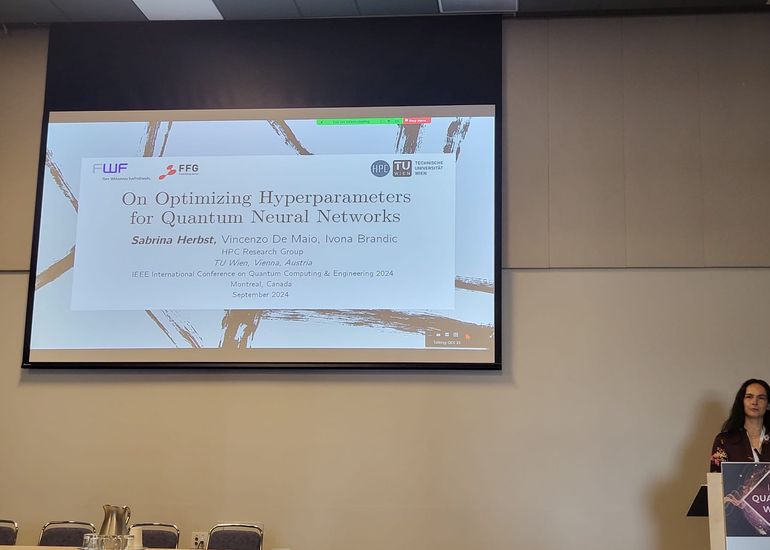Exploring Channel Distinguishability in Local Neighborhoods of the Model Space in QNNs
CAIML PhD student Sabrina Herbst published a paper at 2024 IEEE International Conference on Quantum Computing and Engineering (QCE).

Paper at QCE 2024 (Sept. 2024): https://doi.org/10.1109/QCE60285.2024.00174
Together with Vincenzo De Maio and Ivona Brandić (HPC Research Group, TU Wien), CAIML PhD Sabrina Herbst published a paper at the 2024 IEEE International Conference on Quantum Computing and Engineering (QCE). They benchmarked a variety of different hyperparameters on four problems, including parameter initialization strategies for mitigating trainability issues, such as Barren Plateaus. Furthermore, given the noise inherent in NISQ technology, they included noise in the simulators to compare with the noiseless simulations.
Paper Details
Title
On Optimizing Hyperparameters for Quantum Neural Networks
Abstract
The increasing capabilities of Machine Learning (ML) models go hand in hand with an immense amount of data and computational power required for training. Therefore, training is usually outsourced into HPC facilities, where we have started to experience limits in scaling conventional hardware, as theorized by Moore’s law. Despite heavy parallelization and optimization efforts, current state-of-the-art ML models require weeks for training, which is associated with an enormous CO2 footprint. Quantum Computing, and specifically Quantum Machine Learning (QML), can offer significant theoretical speed-ups and enhanced expressive power. However, training QML models requires tuning various hyperparameters, which is a nontrivial task, and suboptimal choices can highly affect the trainability and performance of the models. In this study, we identify main hyperparameters and collect data about the performance of QML models on real-world data. Notably, we build on existing work by also benchmarking different proposed parameter initialization strategies, which should help avoid trainability issues, such as Barren Plateaus. We compare different configurations and provide researchers with performance data and concrete suggestions for hyperparameter selection.

